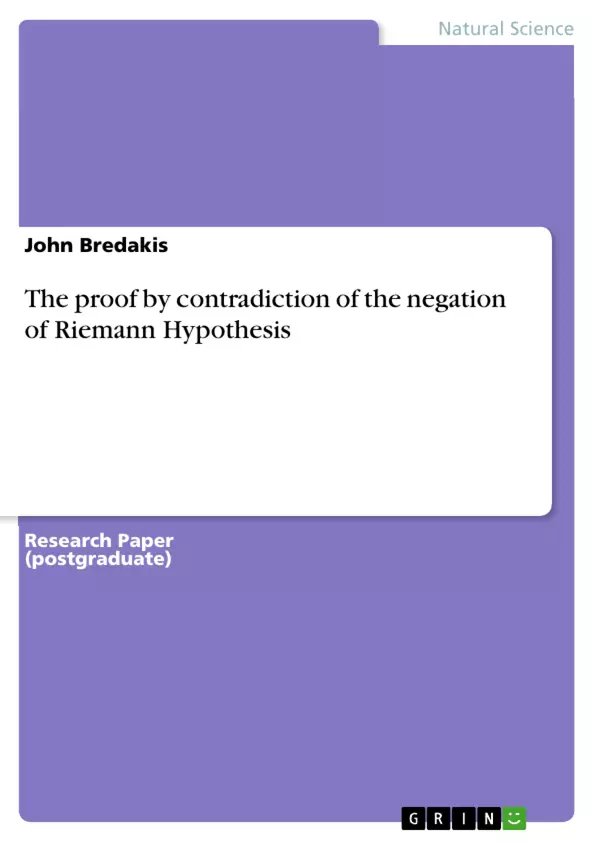The proof by contradiction of the negation of Riemann Hypothesis
Frequently Asked Questions About "The proof by contradiction of the negation of Riemann Hypothesis"
What is the main claim of this document?
The document claims to present a proof by contradiction that the Riemann Hypothesis is not valid.
What equation does the author present as key to the proof?
The author states that the Riemann Hypothesis is not valid if there exist p, q, and t (p ≠ q) to match a specific equation (provided in the document). The correctness of this equation is stated.
What is the author's Working Hypothesis?
The author's Working Hypothesis involves finding conditions under which A=B=0, expecting that these zeros belong to the Zeta function.
What formulas are used for A and B in the Working Hypothesis?
The document provides formulas for calculating A and B based on p, q, and t, where s=(p + i.t) or s=(q + i.t) and 0 < p < 1, 0 < q < 1, q = 1-p. These formulas involve the Zeta function and the Gamma function.
What integrals are discussed?
The document discusses integrals related to cosine and sine functions, with respect to a variable x, over the interval from 1 to positive infinity. These integrals are related to the formulas for A and B and the Working Hypothesis.
What does the author say about selecting 't' values?
The author mentions the next step is to select a 't' value to satisfy an equation. These ‘t’ values, roots of the polynomial, exist but cannot be defined because the exact value of a variable (>1) is not known.
What are the distinct roots, t1,2, found?
The author states that those roots exist and are equal to (MT)/2, however the T cannot be calculated. Also related expressions for these roots are shown.
What is the Mean Value Theorem of Integral Calculus used for?
The Mean Value Theorem is applied to find a value greater than 1 so that expressions involving sine and cosine of log() are considered, where the values are part of calculations related to proving the hypothesis.
What is the relationship to the Gamma function?
The formulas for A and B involve the Gamma function, denoted by (s/2) and [(1-s)/2].
Where can I find more information about the author's work?
The author references a blog: http://Mathhighways.blogspot.com/, and indicates further details are in a PDF titled "Understanding the Zeta function and the Riemann Hypothesis".
What resources did the author use to prove the Riemann Hypothesis?
The document mentions the book "Big Bang in Math , John Bredakis method & the Gamma function, a pdf by Theodore Yoder (Introduction to Riemann Hypothesis) , Lorentzo Menici.
Who is the author and when was it written?
The document is by John Bredakis, written in Athens, Greece in 2013.
Who is Elias Kastanas?
Elias Kastanas is a Professor of Mathematics who provided advice and checked the work.
- Arbeit zitieren
- Prof. Dr. med. John Bredakis (Autor:in), 2013, The proof by contradiction of the negation of Riemann Hypothesis, München, GRIN Verlag, https://www.grin.com/document/213699



